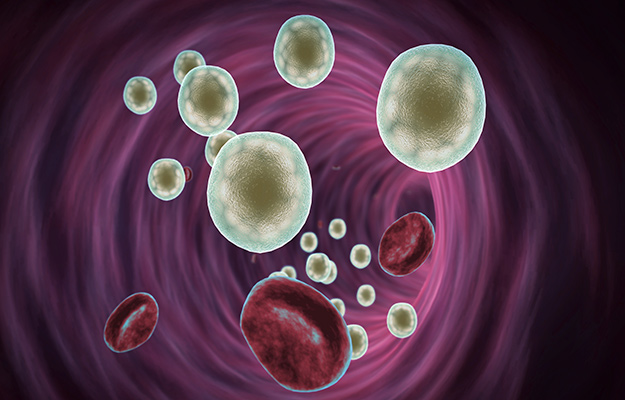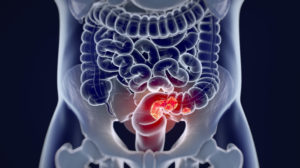A recent study looks at the effect of Bisphenol-A (BPA) on obesity, weight loss, and epigenetics. The findings could change the way we approach epigenetic-driven weight loss.
RELATED: Obesogenic Diet Drives Epigenetic Predisposition To Metabolic Disorders
In this article:
Study Uncovers Potential for Weight Loss and Epigenetics
Background

Obesity is on the rise, but despite attempts to find the underlying causes, the reasons for this epidemic are still unclear. However, there appears to be a correlation between exposure to endocrine-disrupting chemicals(EDCs), such as Bisphenol-A (BPA), and the prevalence of obesity.
According to the Obesogen hypothesis, EDCs may contribute to the prevalence of obesity and its related disorders. EDCs are substances or mixtures that alter the functions of the endocrine system and cause unwanted health effects. Such chemicals enter the food and water supply through industrial processing and accumulate in wildlife and humans.
EDCs cause weight gain directly by increasing the size and number of fat cells. It may also alter the metabolism and hormonal control of satiety and appetite. Of these compounds, BPA is the most studied member. It’s a small molecule typically applied in the production of epoxy, polycarbonate, and other polymer compounds.
Although non-dietary components, such as pollution, expose us to BPA, studies show diet to be the primary source. Products in bottles, plastic containers, and cans have the highest concentrations of BPA regardless of the specific nutrient category.
Many studies have illustrated the obesogenic effect of BPA. Notable findings include:
- High levels of BPA in body fluids, like urine, are linked with greater obesity risk.
- Exposure to BPA causes fat cell dysfunction as it leads to a drop in glucose tolerance and insulin sensitivity.
- Extended exposure to BPA impairs insulin signaling and reduces insulin-stimulated glucose utilization. At the same time, it raises proinflammatory cytokine expression and release.
These findings support the hypothesis that exposure to BPA leads to metabolic dysfunction and inflammation of fat cells. Thus, increasing the risk of obesity and related metabolic disorders.
Although studies agree on the harmful effects of BPA on fat cell function, researchers can’t say the same about BPA effects on fat cell formation(adipogenesis). In-vitro studies showed that exposure to high and low range of BPA doses during cell differentiation led to higher lipid buildup in fat cells.
Prenatal BPA exposure also caused a notable rise in the birth weight of offspring.
According to reports, the expression of adipogenic marker genes such as peroxisome proliferator-activated receptor-gamma (Pparγ) increased when tested.
Ppary is the prime transcription factor involved in fat cell formation.
Various factors may explain the discrepancies, such as modern assessment methods, cellular models used, high doses of BPA applied, exposure time, and treatment window adopted.
RELATED: Study Shows The Older A Person Is When They Give Birth, The Older They May Live
Study Methods and Results
This study aimed to examine the effects of prolonged exposure to low BPA concentrations on the phases of fat cell production and Pparγ expression.
Researchers tested the lowest BPA concentration at which human exposure occurs. They also examined whether the induced changes are reversible after BPA exposure ends.
The team hypothesized that BPA could act as an early initiator of Ppary upregulation that occurs later during differentiation, making cells more likely to develop.
Scientists induced adipogenesis after cells were cultured in the presence of BPA for eight days. Additionally, they replaced the BPA medium every other day during the pretreatment and differentiation phases.
They also chronically exposed the cells to low concentrations of BPA to mimic human exposure.
Findings
BPA exposure caused a significant increase in Ppary expression in D4 of fat cell differentiation.
After exposure stopped, the Ppary methylation and inflammatory profile of the cells returned to a similar state as the control group.
The overexpression of the single Ppary transcription factor couldn’t offset the lack of differentiation mix. This compares to published data.
Conclusion
As previously demonstrated, exposure to low doses of BPA during fat cell differentiation does result in dysfunctional fat cells characterized by decreased insulin-stimulated glucose uptake and increased proinflammatory cytokines expression.
The team also identified DNA methylation as an alternative transcriptional mechanism by which BPA affected gene expression and demonstrated how the challenge of preventing exposure is vital to human health.
Pparγ could represent only the first identified target gene, and other genes, including inflammatory cytokines, can be regulated by shared epigenetic mechanisms.
Furthermore, at these low concentrations, BPA’s effects do not alter the process of fat cell formation.
Lastly, exposure to low doses of BPA causes reversible effects. Stopping the exposure to BPA and the induction of inflammatory cytokines can prevent the progression towards more severe metabolic complications.
What are your thoughts on the study findings? Please share them with us in the comments section below.
Source:
Up Next:





